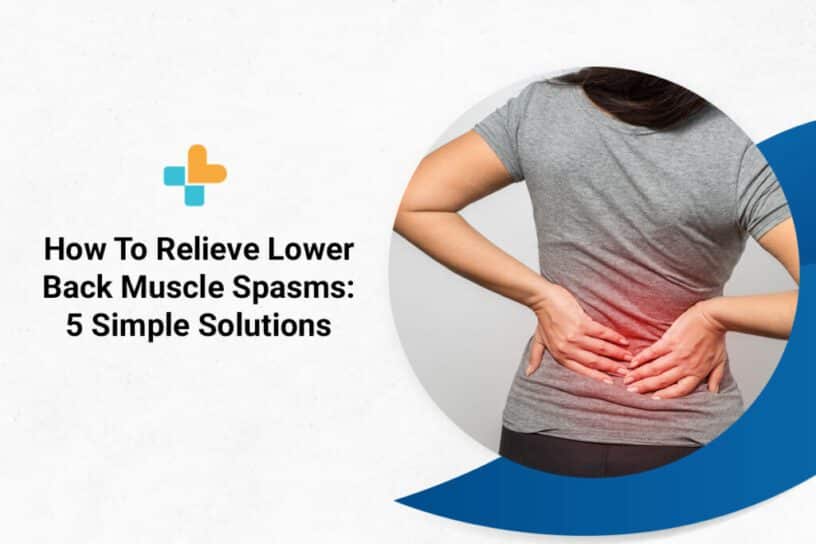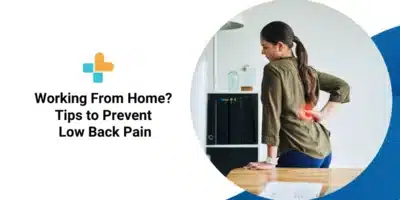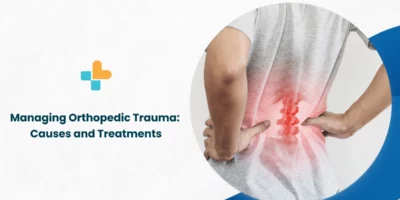One of the most common questions lifters ask their physicians is: how to relieve lower back muscle spasms?
Lower back spasms can be uncomfortable and irritating. They feel like tight muscle contractions, and in many cases, they restrict movement.
Lower back spasms may turn into searing pain in a particular spot, a dull aching that moves around the body, or a combination of these uncomfortable sensations. Some people also suffer from leg or hip discomfort and lower back pain when they have lower back spasms.
Well, there’s good news. Lower back spasms and their symptoms can be treated with the right medication, therapies, and lifestyle changes.
This article will explore what causes lower back spasms, their symptoms, and some preventative measures. Finally, we’ll talk about how to relieve lower back muscle spasms.
Let’s get started.
What Causes Lower Back Spasms?
Lower back spasms are caused by injuries to muscles, tendons, and ligaments in your back. They can even be a result of serious medical conditions. But the most common cause of back spasms is heavy lifting.
Lower back spasms are caused by injuries to muscles, tendons, and ligaments in your back. They can even be a result of serious medical conditions. But the most common cause of back spasms is heavy lifting.
Sometimes a relatively tiny factor, such as a light strain, may be the root of the problem. In certain individuals, a serious underlying ailment, such as a ruptured or herniated spinal disc, could be the cause.
Sometimes a relatively tiny factor, such as a light strain, may be the root of the problem. In certain individuals, a serious underlying ailment, such as a ruptured or herniated spinal disc, could be the cause.
Here are some of the most common causes of spasms in the lower back.
1. Bad Posture
Poor posture can stress the back muscles. You’re especially susceptible to this when driving or sitting down.
Some patients modify their posture to cope with the spasms, which could worsen the pain. Due to muscle weakening and inflammation, prolonged sitting can also trigger muscle spasms.
2. Lack of Physical Activity
Your back and abdomen may experience back discomfort from weak and underutilized muscles. Some people spend most of the day slouching over a computer or on a chair. This can weaken the muscles in the back and other body parts over time, potentially leading to back spasms.
3. Unexpected, Recurring Strains, Sprains, and Cramps
A lower back spasm occurs when a ligament is ripped or strained, as opposed to a back strain, which occurs when a muscle tears from overextension. Both can result in lower back pain and muscular spasms.
Sprains and strains result from overstretching or overworking your muscles. Although they can hurt for several weeks, these wounds frequently heal independently.
Regularly lifting heavy weights or abrupt awkward movements might strain the back muscles and spinal ligaments, especially if you lift with bad form.
4. Problems With Bulging or Ruptured Discs
A ruptured or bulging disc can cause lower back muscle spasms.
Intervertebral discs cushion the vertebrae in your spine. They contain a delicate substance called nucleus pulposus, which has the potential to swell, rupture, and press on your nerves.
However, a ruptured or bulging disc might exist without causing back discomfort.
5. Arthritis
You may get occasional back spasms if you have arthritis.
There’s no single form of arthritis that causes back pain and stiffness; rather, there are numerous varieties of arthritis that can do so.
The one that most frequently affects the spine is osteoarthritis. While it can affect any part of the spine, arthritis tends to occur more frequently in the neck and lower back. The most typical signs of spine arthritis are pain and stiffness.
Symptoms of Lower Back Spasms
Here are some of the most common symptoms of lower back spasms.
- Sudden, intense lower back pain
- Back cramps that tend to come and go
- Weakness in the hips and lower back
- Chronic lower back pain
- Trouble with moving or picking something
- Lower back tension
How To Prevent Lower Back Spasms
Since prevention is better than cure, it’s best to take measures to avoid lower back spasms. This involves strengthening your lower back and avoiding injuries.
The following are the most effective methods to protect your lower back:
- Lift heavy objects with your legs, not with your back.
- Sleep or rest on a mattress of medium softness.
- Maintain a good sitting posture when working for long periods on a desk.
- Maintain good posture throughout the day.
How To Relieve Lower Back Muscle Spasms
While precautions can help you prevent lower back spasms, we’re human and make mistakes. So, knowing how to relieve lower back muscle spasms is almost as important as knowing how to prevent them.
Here’s how to relieve lower back muscle spasms.
1. Chiropractic Care
One of the prominent types of back pain is acute low back pain (which may result from lower back spasms).
Spinal manipulation can help patients with this condition feel and function better. The purpose of this therapy is to enhance the physical function of your body and spinal motion.
Word of warning: make sure you go to a licensed and well-experienced chiropractor. You don’t want someone who doesn’t know what they’re doing handling your back pain.
2. Cold Therapy
When your lower back muscles are injured and spasming because of lifting something too heavy, the cold from the ice can assist in relieving inflammation in the affected area.
If the spasm is persistent, apply an ice pack for 15–20 minutes a time, a few times a day. Make sure you cover the ice pack with a towel or cloth before application.
3. Dietary Changes
The key to optimal health is consuming a well-balanced diet. Eating healthy assists people who experience spasms in the lower back and ease some of their pain.
We highly recommend eating a diet rich in anti-inflammatory foods. These include:
- Seafood
- Fruits
- Green, leafy vegetables
- Nuts and seeds
- Pulses (like daal)
- Olives and olive oil
- Herbs and spices
4. Heat Therapy
Heat therapy is one of the most commonly applied treatments for various injuries.
Since it increases blood circulation that enables nutrients and oxygen to reach joints and muscles quickly, heat therapy is one of the best treatments for lower back spasms.
5. Injections and Medications
For back pain that is either acute or chronic, injections are a nonsurgical treatment option. At the same time, medication should be taken per the doctor’s consultation.
How To Relieve Lower Back Muscle Spasms Permanently
Knowing how to relieve lower back muscle spasms is essential, especially if you’re a lifter. But it’s better to take measures to prevent them from the get-go.
Remember that prompt and appropriate medical attention is only available if you identify lower back spasms early. Ayu Health thoroughly assesses your condition and gives you a thorough back spasm treatment plan, enabling you to be pain-free.
Avoid letting a back spasm impair your quality of life. Schedule a consultation with us to treat your lower back spasm.
Ayu Health has the best dermatology facilities with proper patient care. Call 636-610-0800 to book an appointment or to know more.
Our Hospital Locations
Orthopaedics Surgery Hospitals in Chandigarh | Orthopaedics Surgery Hospitals in Bangalore | Orthopaedics Surgery Hospitals in Jaipur | Orthopaedics Surgery Hospitals in NCR | Orthopaedics Surgery Hospitals in Hyderabad
Our Doctors
Orthopaedics Surgery Doctors in Chandigarh | Orthopaedics Surgery Doctors in Bangalore | Orthopaedics Surgery Doctors in Jaipur | Orthopaedics Surgery Doctors in NCR | Orthopaedics Surgery Doctors in Hyderabad
About the Author

Dr. S. Goel
Dr. S. Goel is a renowned Internal Medicine Specialist currently practicing at Ayu Health, Bangalore. He is a Specialist in Internal Medicine, Diabetes HTN, Paediatric Care, and Family Medicine.




